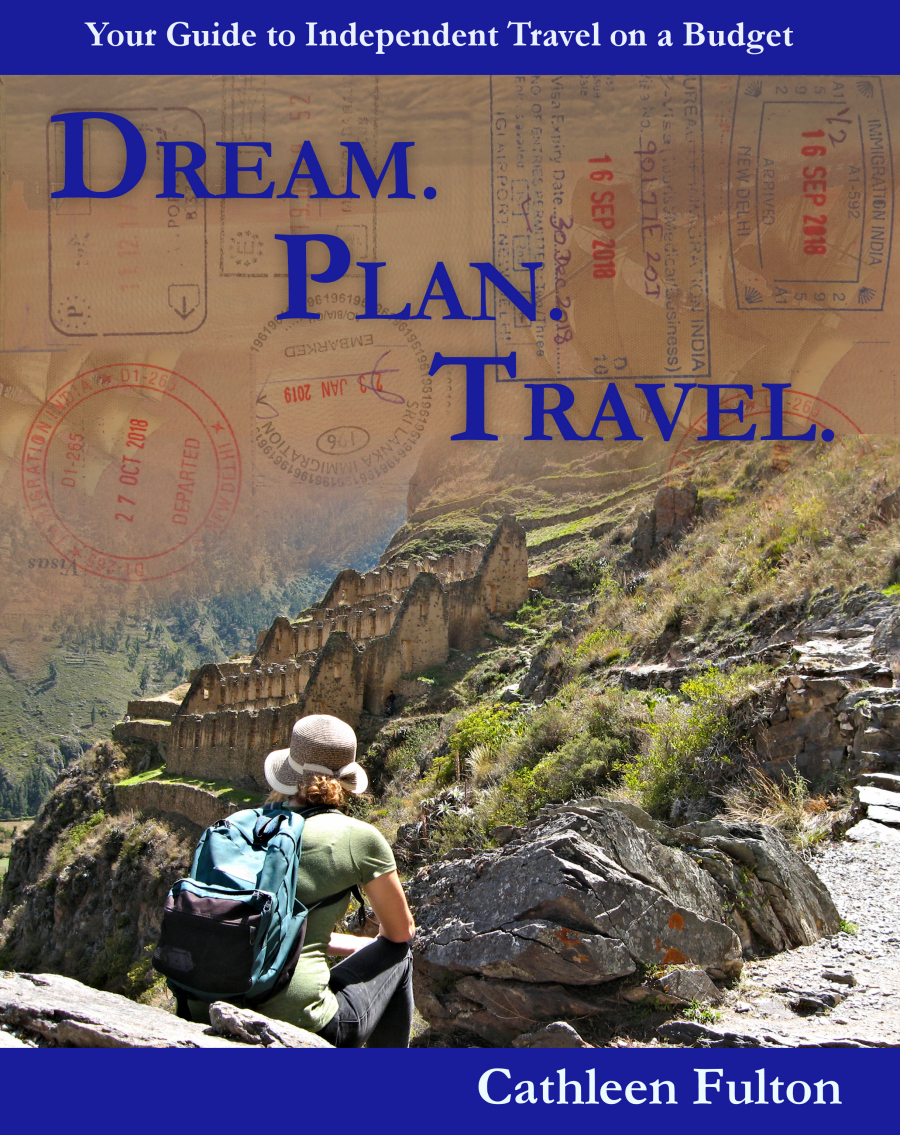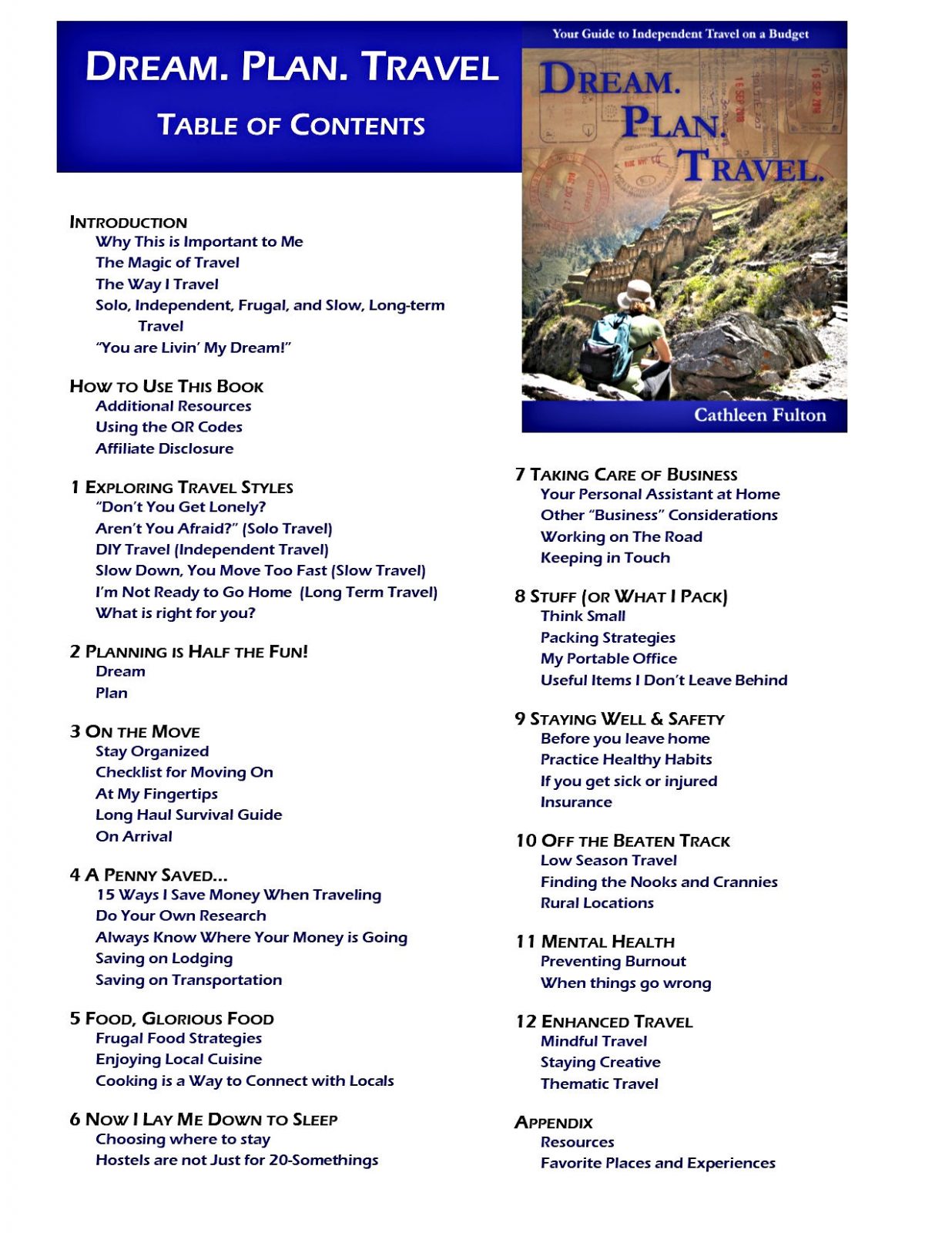Introduction to My Book:
Dream. Plan. Travel.
I am posting the Introduction to Dream. Plan. Travel. here so you can get an idea of what it is about and why I decided to write it.
The table of contents is included at the end of the post.
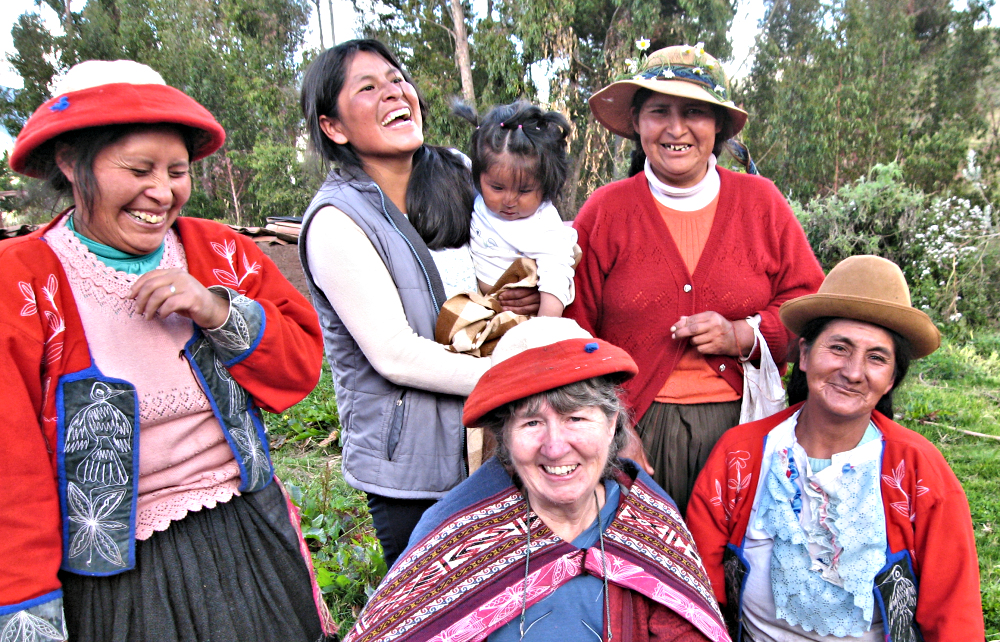
Dream. Plan. Travel is a book about traveling, but I have a hard time categorizing it. It is not just a travelogue. It is also not just a how-to-travel guide. I envisioned a work that would show how I travel as well as inspire others to find the travel style and methods that work for them.
Why This is Important to Me
Post Contents
As our world becomes more polarized (politically and culturally), fear of the unknown is easily used as a propaganda device to create more fear and keep us in our place (our village).
When we actually visit and experience cultures and people that are different from us, we learn that the world is really not such a dangerous place. People who seem different from us at first really are not. Almost everyone in the world wants security for their families, food in their tummies, a dry bed to sleep in at night, and friends and relatives that care about them. We all want to share our experiences, laugh together, learn from each other, express ourselves through our art, and watch our children grow into adults.
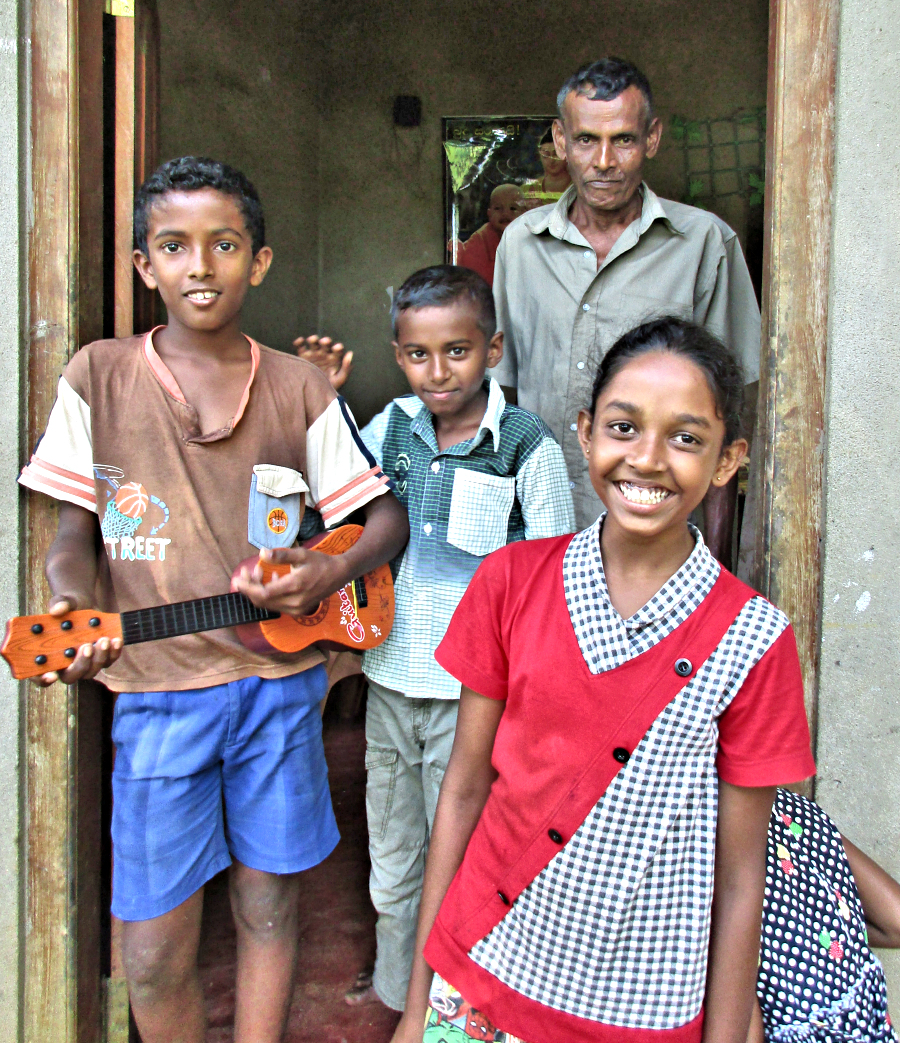
I began travelling because I loved seeing new places and experiencing first-hand how other people live. Over the years, however, I have developed a personal philosophy about travel: not just about how educational it is, but about how it is a valuable tool for personal development and empowerment; about how it promotes understanding among people who may be very different; and about how it could be a way to achieve lasting peace.
I feel that traveling authentically and independently—engaging with locals and learning how our similarities outweigh our differences—is an important avenue to peace.
If even 75% of us placed ourselves outside our normal lives for even a few months, we would reach levels of understanding and compassion that would be astounding.
The Magic of Travel
The first day I landed in Peru in 2014, I was so scared, I did not want to leave my guesthouse. But I did, and step-by-step I pushed out the boundaries that were holding me back.
After I had traveled a while, I found my mind expanding—opening itself to possibilities and finding opportunities everywhere I looked. I became more creative—so much so, that I had a hard time turning the flood of ideas off. Gradually I began to notice coincidences happening every time I turned around. It was like I had taken a magic potion. I cannot explain it, of course, but I have not taken these occurrences for granted. As a result, I find them happening more and more often.
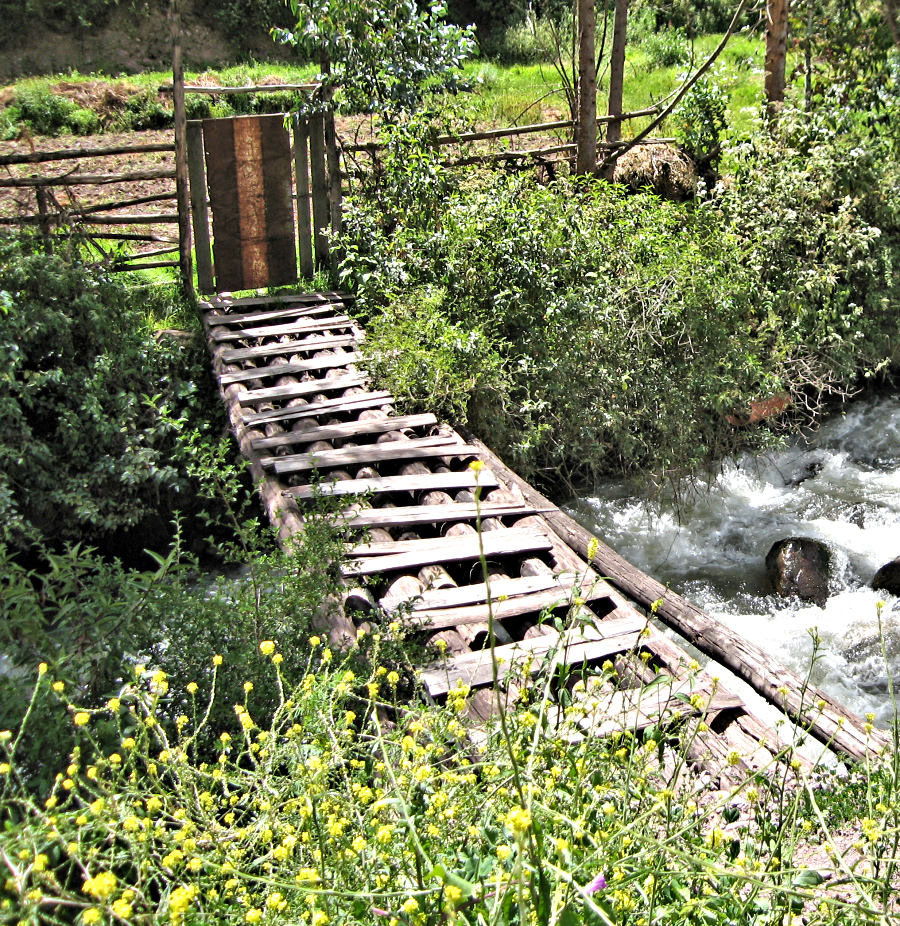
Travel, especially travel outside your comfort zone, empowers you to live to your fullest potential, even once you return home. One long-term trip abroad and you will never be the same person you were before.
The Way I Travel
The way I move around this planet has evolved as I learned what kind of travel suited me. I am not that interested in most tourism sites. I’ve seen a few castles and plenty of cathedrals. I have difficulties remembering details of history and art styles. Geo-political topics lose my interest after about ten minutes. But sometimes I hear about a site or museum that sounds interesting and I might spend a whole day there, only to be chased out as the doors close. Some that come to mind are the New Lanark Heritage Site in Scotland, the Slavery Museum in Liverpool; the Speelklok Museum in Utrecht; the Haapsalu Lace Center in Estonia; the Famine Museum in Ireland; and the Titanic Museum in Belfast. Do you see the pattern? These are all places where you can immerse yourself in a specific theme.
But I am most passionate about visiting places where I can connect with people who share interests similar to mine. My first sojourn as a “woman of a certain age” in 2014 was to Peru, which I chose because I wanted to meet knitters and spinners in the country where most of our alpaca yarn comes from. I took a leap of faith and got a non-refundable round-trip ticket that would not bring me home for 3½ months. Before I knew it, I was hooked on solo, independent, and long-term travel.
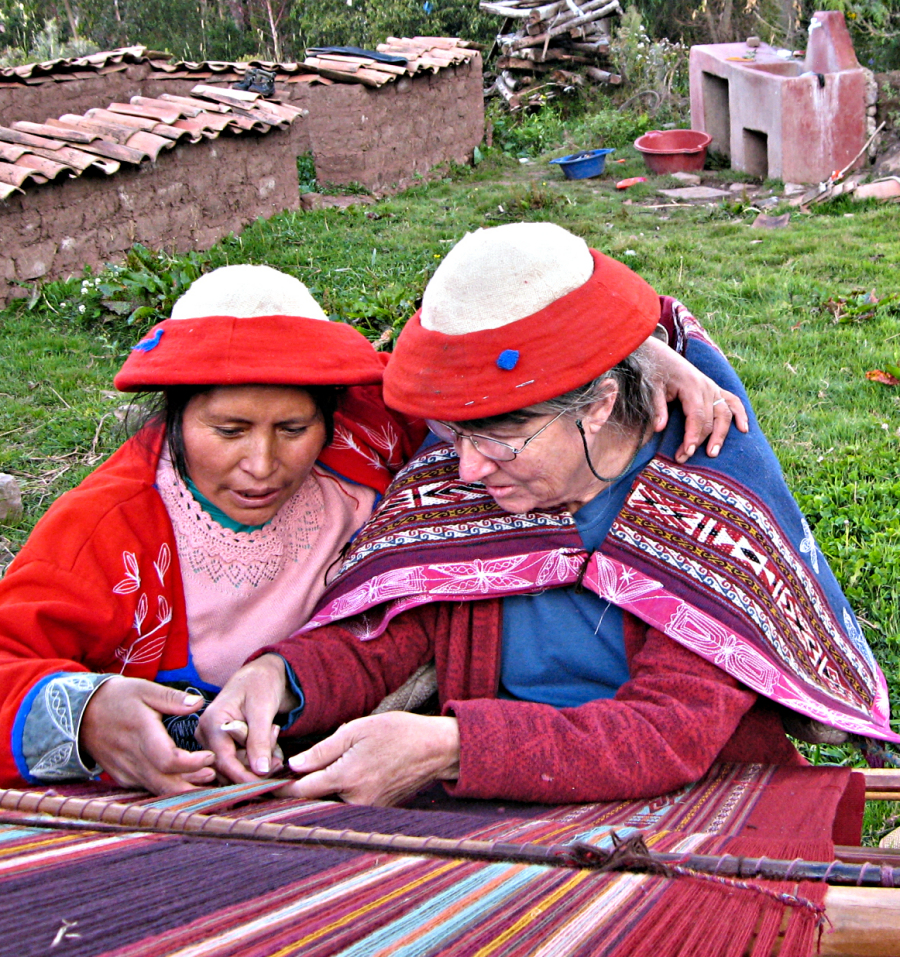
Solo, Independent, Frugal, Slow, and Long-term Travel
I travel:
- solo: alone—although I have befriended a LOT of people along the way
- independently: making almost all my own travel plans; not using the services of agencies, tour groups, or guides
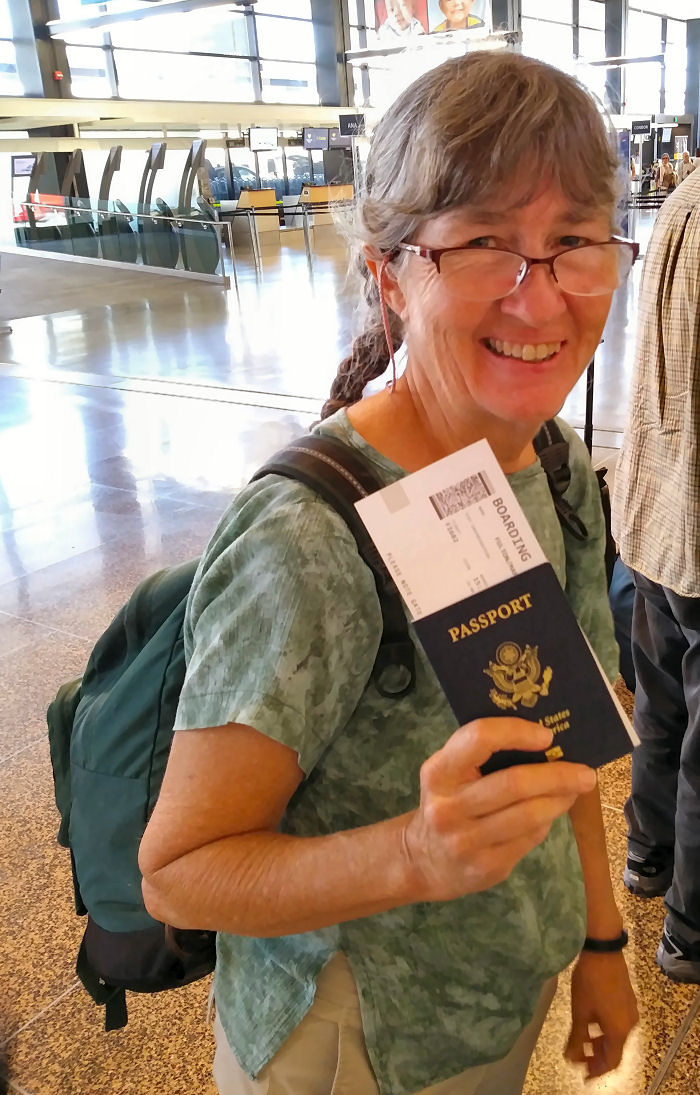
- frugally: I try to find a balance among affordability, comfort, and experiences. It can be a fine line.
- slowly: staying in one place for one to three months, so I can become accustomed to the culture, make friends, work on creative projects, and explore the area.
- long-term: more than a few weeks to a month, which is common for folks on holiday
I have chosen these travel styles because they fit my personality and my sense of independence. Each has its pros and cons. Some people might enjoy traveling solo and long-term, but they would prefer having someone else deal with the planning and booking hassles. Some get lonely when traveling solo, or they really enjoy having a partner with whom to share the experience. Still others love solo and independent travel, but not for a long period of time—either because they enjoy their homes, friends, and family, or because they just cannot afford to be gone from work for more than a few weeks.
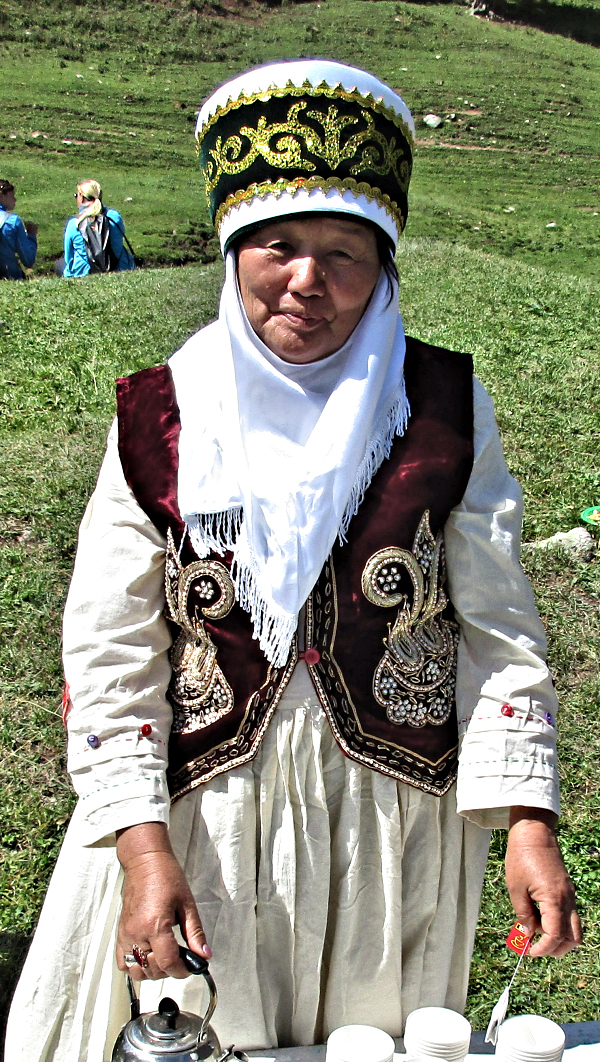
“You are Livin’ My Dream”
As I travel, the questions I most often receive have to do with one of my styles of travel:
- Aren’t you afraid? Is it dangerous?
- Don’t you get lonely?
- Don’t you miss home/friends/family?
- How do you decide where to go next?
- Can I watch you when you are making your travel plans? (i.e. researching where to go, how to book, how to get there)
- How do you travel so cheaply?
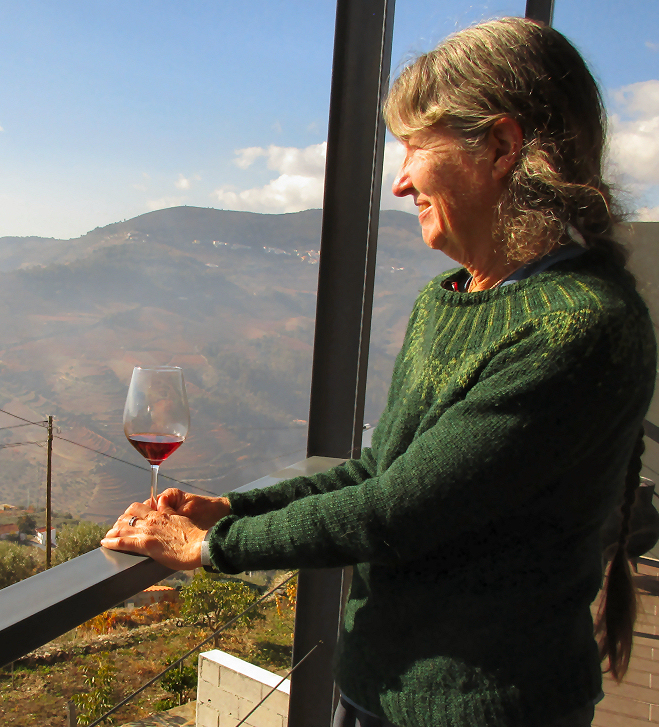
And so many people respond, “You are livin’ my dream.”
I get the idea that many people I meet would like to do something like this, but something is holding them back. It is important to determine exactly what is holding you back. Can it be overcome? Sometimes not. Until 2010, I had a profoundly disabled daughter. Rachel required care 24/7 and did not travel well. It would have been impossible (or exceedingly difficult) to travel with her, and I would not leave her in the care of others. In 2010, Rachel passed away unexpectedly at the age of 28. About a year after her passing, I realized that, if I sold my house and downsized a great deal, I could travel again.
The main obstacle until 2010, was unsurpassable—I could not leave Rachel. But after that, my obstacles were financial and attachment to the home I owned. And there were solutions for those issues.
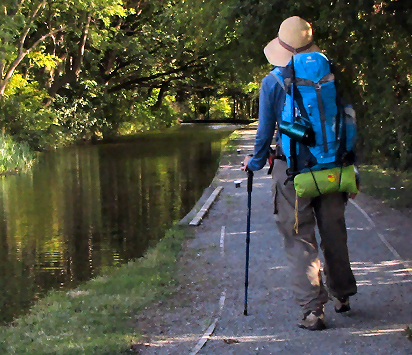
We each need to determine what holds us back from achieving any of our dreams—family, debt, career. And we have to decide what is most important to us. I have found that journaling about the problem can help to unlock possibilities that are stuck in my head. Discussing my dreams with supportive friends and family was also very helpful. I discovered that a cheering squad of friends is an effective tool to not only embark on a dream, but also to keep that dream alive as I lived it.
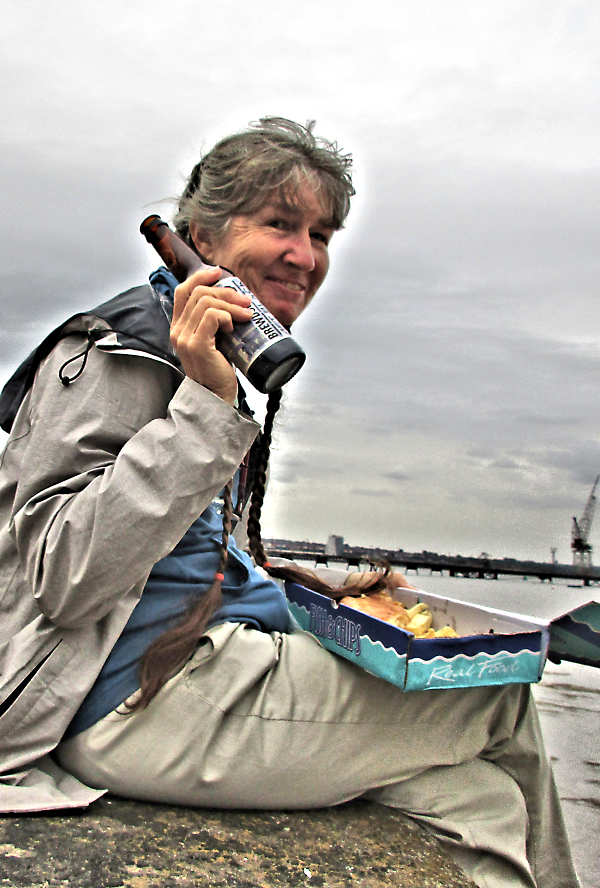
And now we get to the root of what this book is all about. I want to be the first person in your cheering squad. By showing you the nitty-gritty of how I travel the world, I hope to not only inspire you to embark on your dream journey, but also to keep you supported with practical information.
Keep dreaming…
Cathy Fulton
Otavalo, Ecuador
May 2019
Other Blog Posts You May Find Interesting
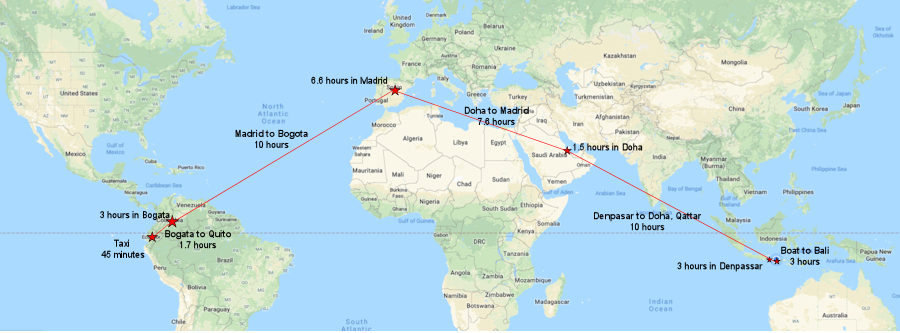
Turning Drudgery into an Adventure
I got to thinking about how challenging this marathon voyage might be when I booked it. I wondered if I was biting off more than I could chew—would it be too much for me?

Worries & Fears
People often ask me if I am afraid to travel alone.
Yes, sometimes I am afraid when traveling. But no more often than when I am at home. Experience helps. Sometimes you just need to step out and meet your fears head-on.
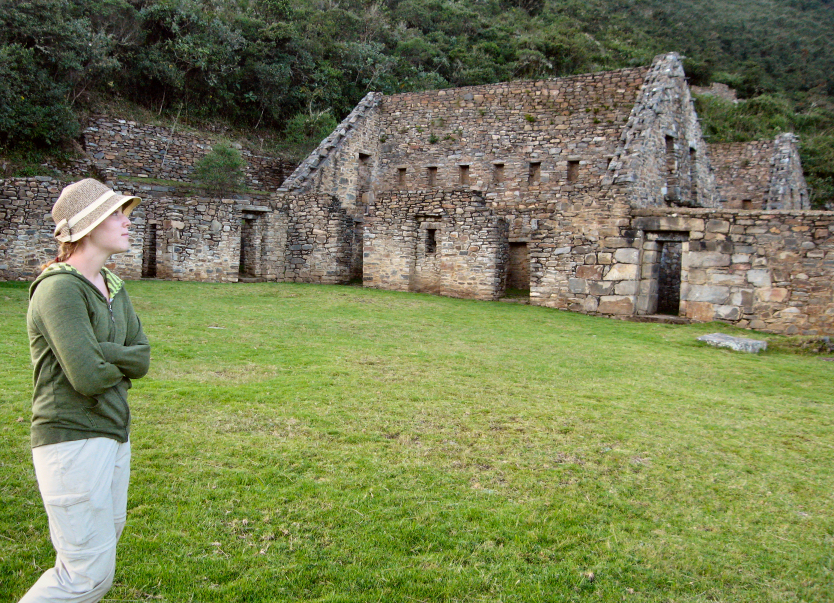
Choquequirao Trek Part II: Images of the Past
Choquequirao means “cradle of gold” in the Quechua language. After another filling lunch and a rest, we started up the trail to visit the Choquequirao ruins.
